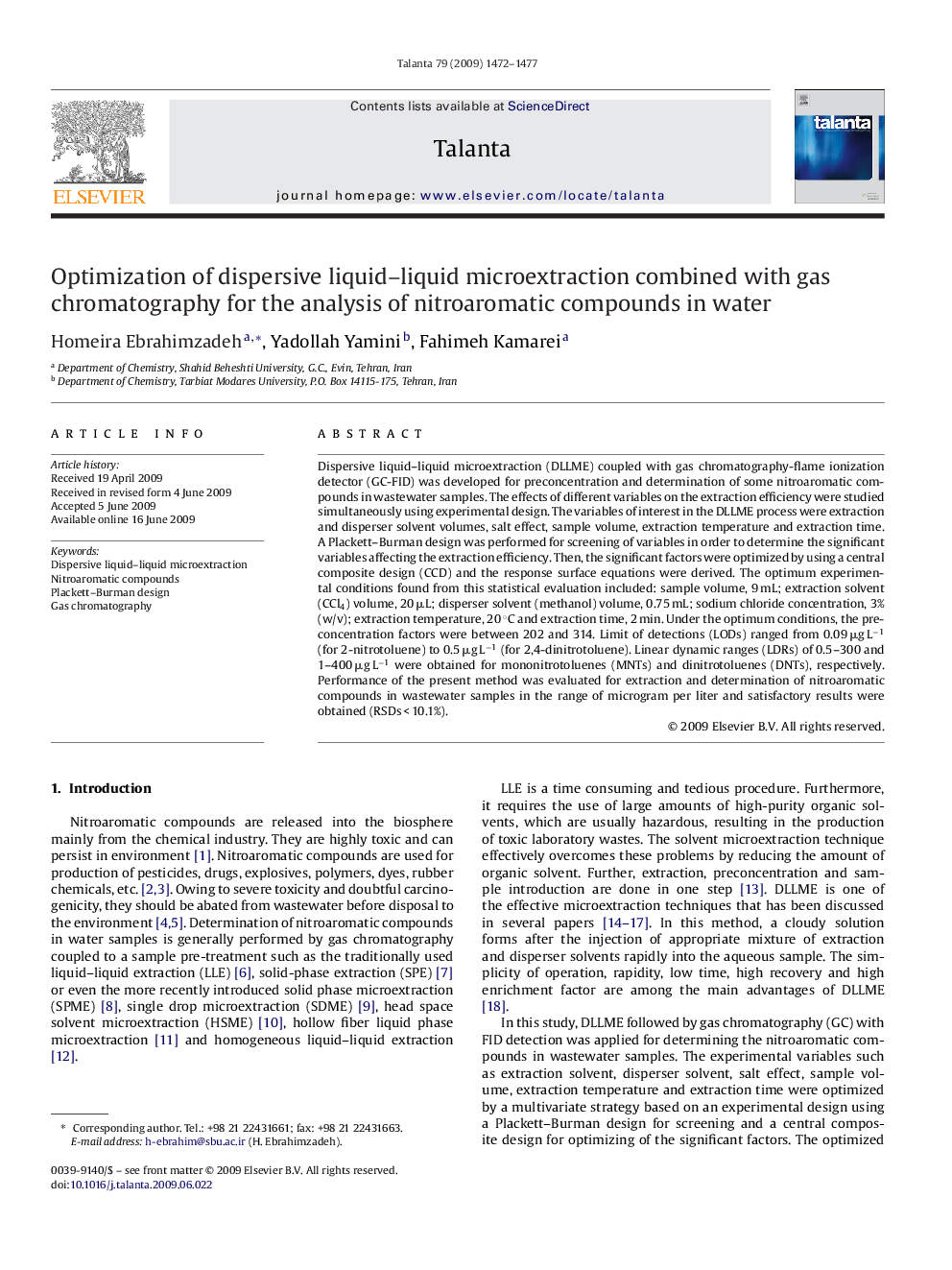| Article ID | Journal | Published Year | Pages | File Type |
|---|---|---|---|---|
| 1246849 | Talanta | 2009 | 6 Pages |
Dispersive liquid–liquid microextraction (DLLME) coupled with gas chromatography-flame ionization detector (GC-FID) was developed for preconcentration and determination of some nitroaromatic compounds in wastewater samples. The effects of different variables on the extraction efficiency were studied simultaneously using experimental design. The variables of interest in the DLLME process were extraction and disperser solvent volumes, salt effect, sample volume, extraction temperature and extraction time. A Plackett–Burman design was performed for screening of variables in order to determine the significant variables affecting the extraction efficiency. Then, the significant factors were optimized by using a central composite design (CCD) and the response surface equations were derived. The optimum experimental conditions found from this statistical evaluation included: sample volume, 9 mL; extraction solvent (CCl4) volume, 20 μL; disperser solvent (methanol) volume, 0.75 mL; sodium chloride concentration, 3% (w/v); extraction temperature, 20 °C and extraction time, 2 min. Under the optimum conditions, the preconcentration factors were between 202 and 314. Limit of detections (LODs) ranged from 0.09 μg L−1 (for 2-nitrotoluene) to 0.5 μg L−1 (for 2,4-dinitrotoluene). Linear dynamic ranges (LDRs) of 0.5–300 and 1–400 μg L−1 were obtained for mononitrotoluenes (MNTs) and dinitrotoluenes (DNTs), respectively. Performance of the present method was evaluated for extraction and determination of nitroaromatic compounds in wastewater samples in the range of microgram per liter and satisfactory results were obtained (RSDs < 10.1%).
